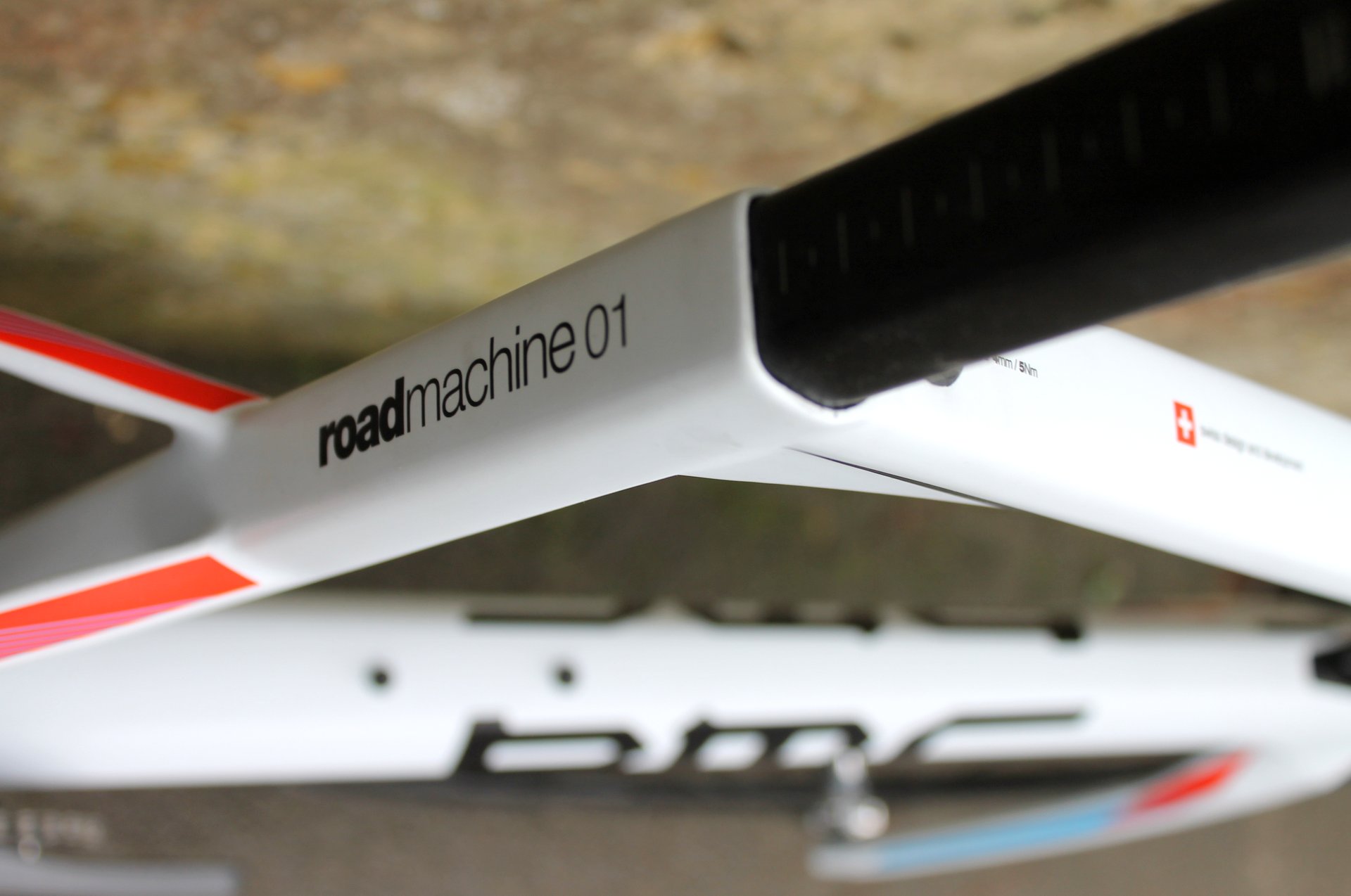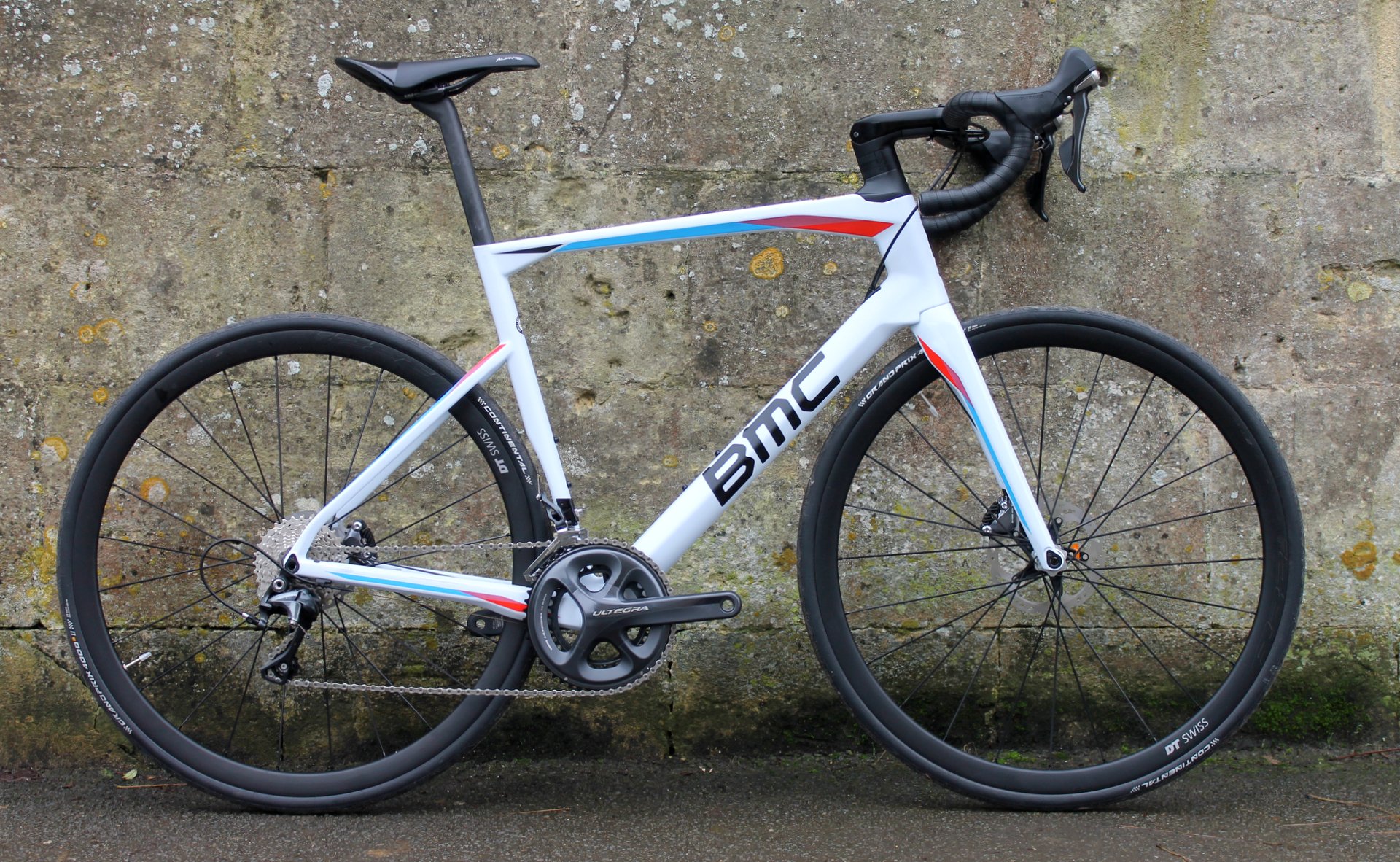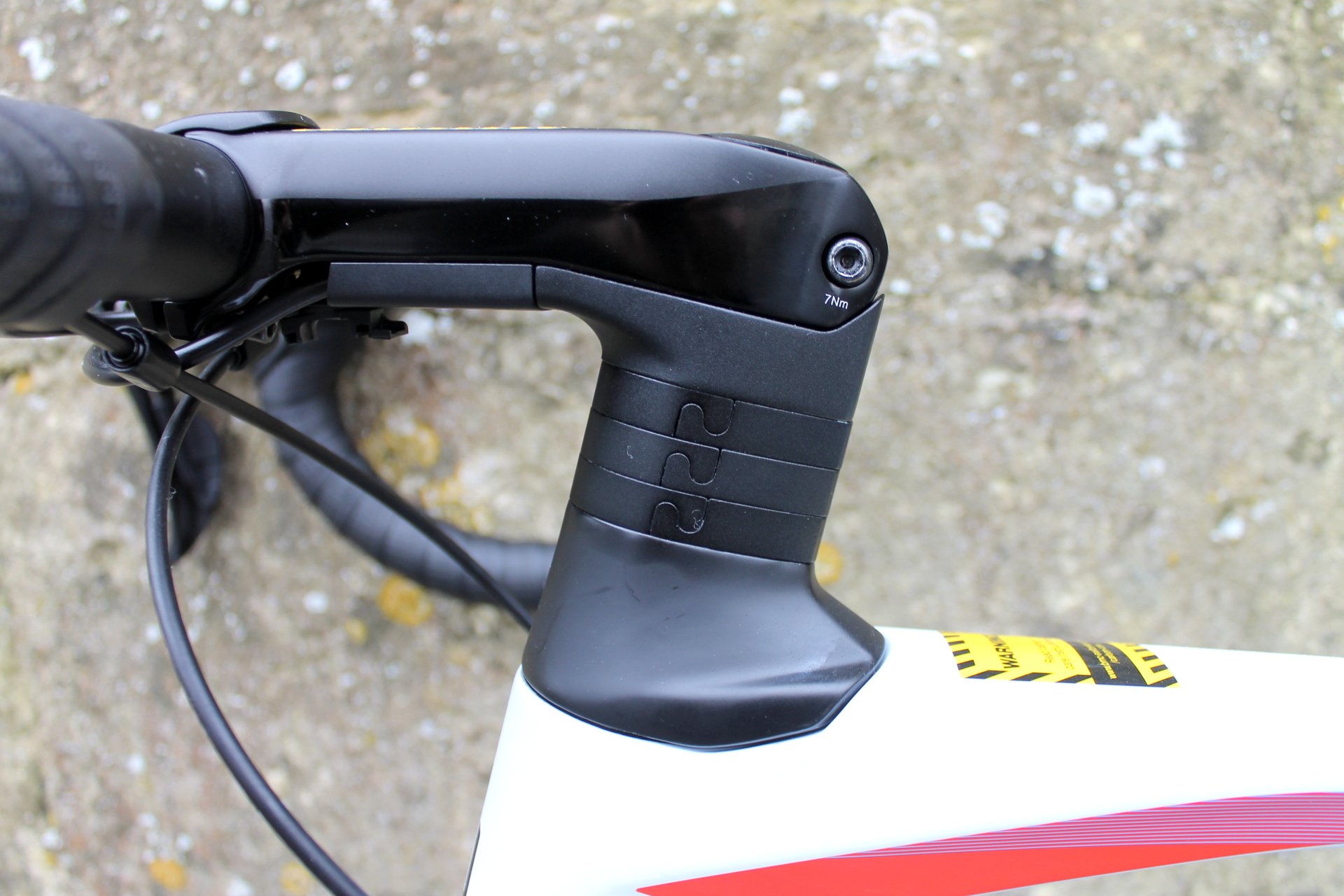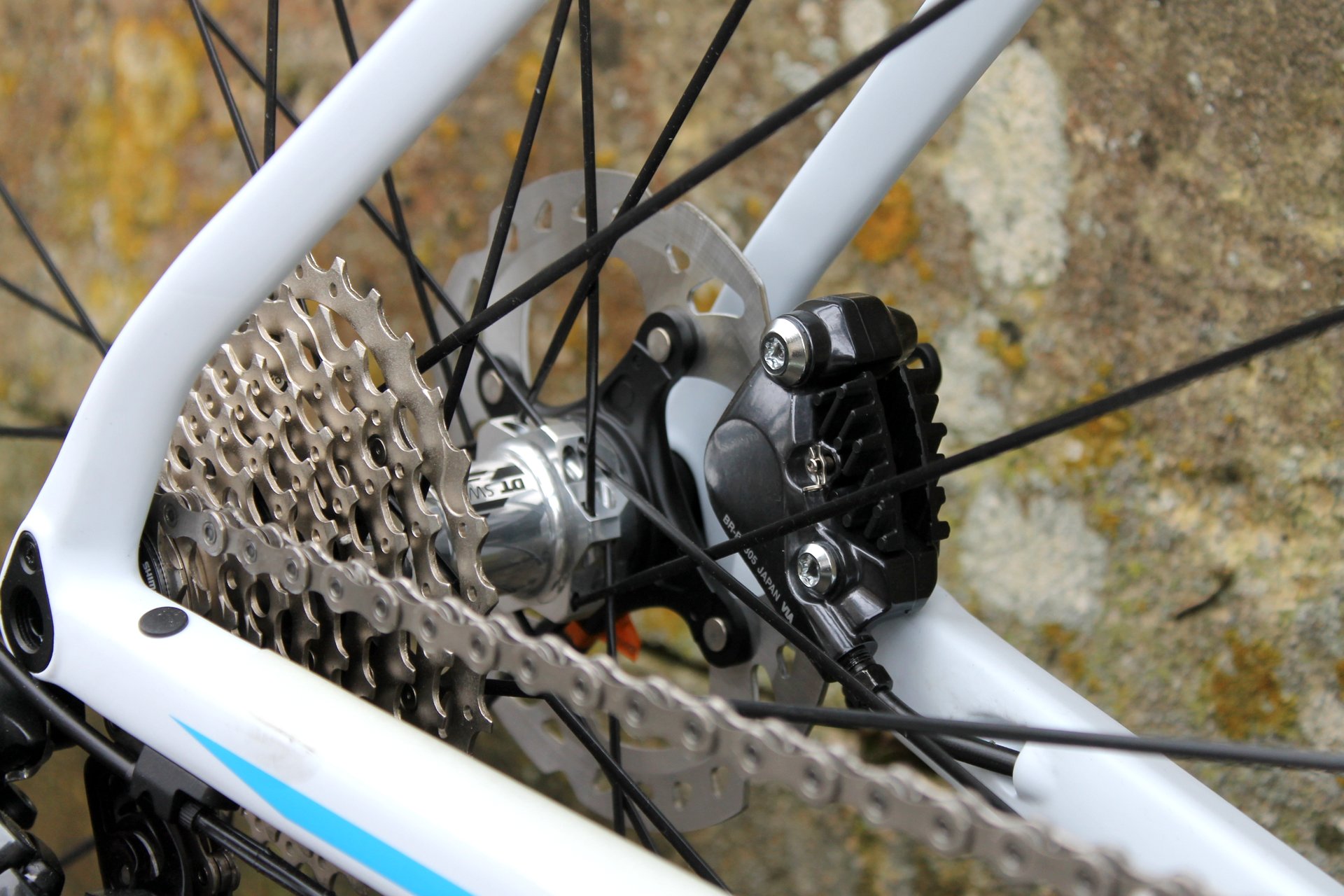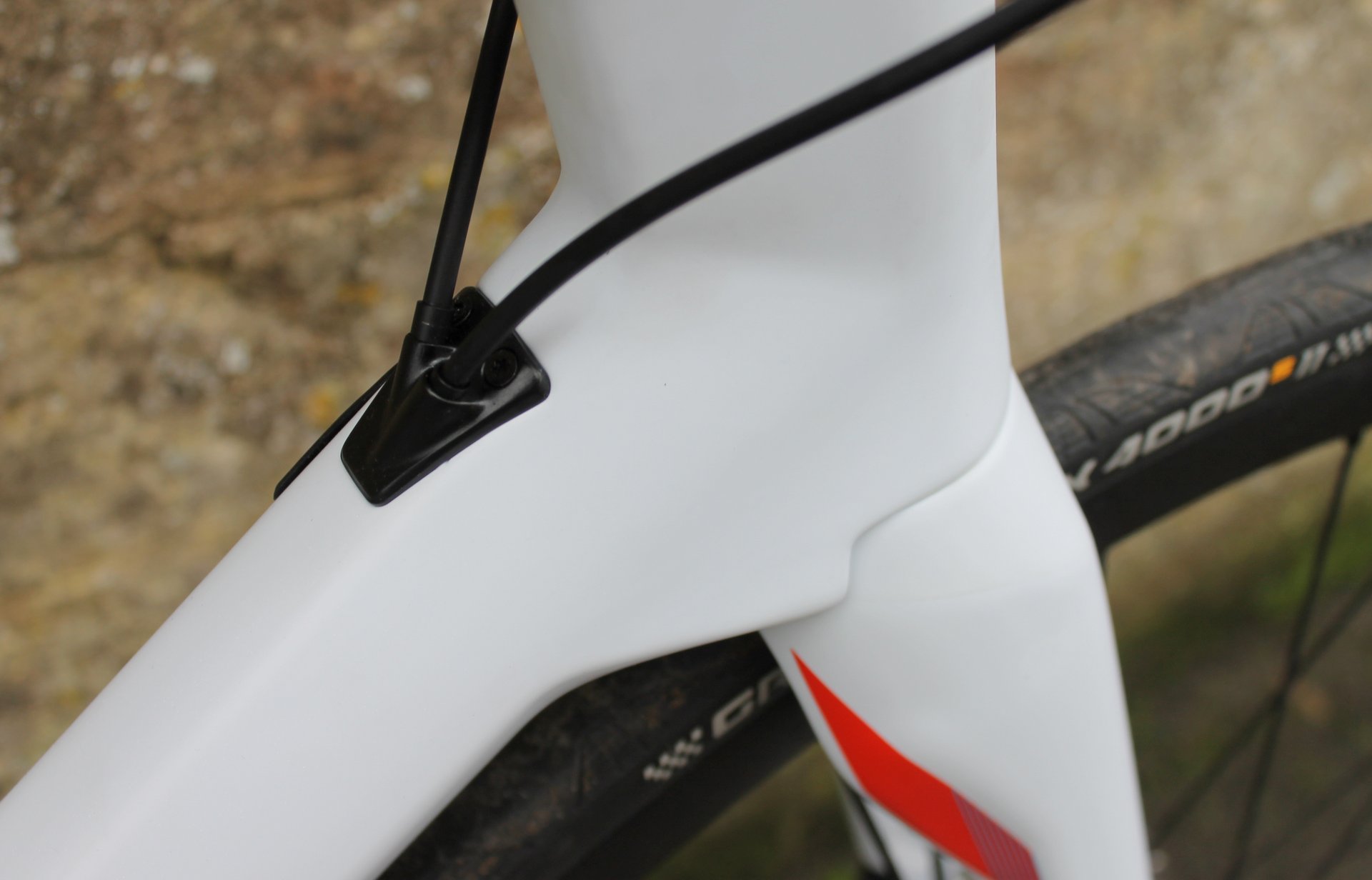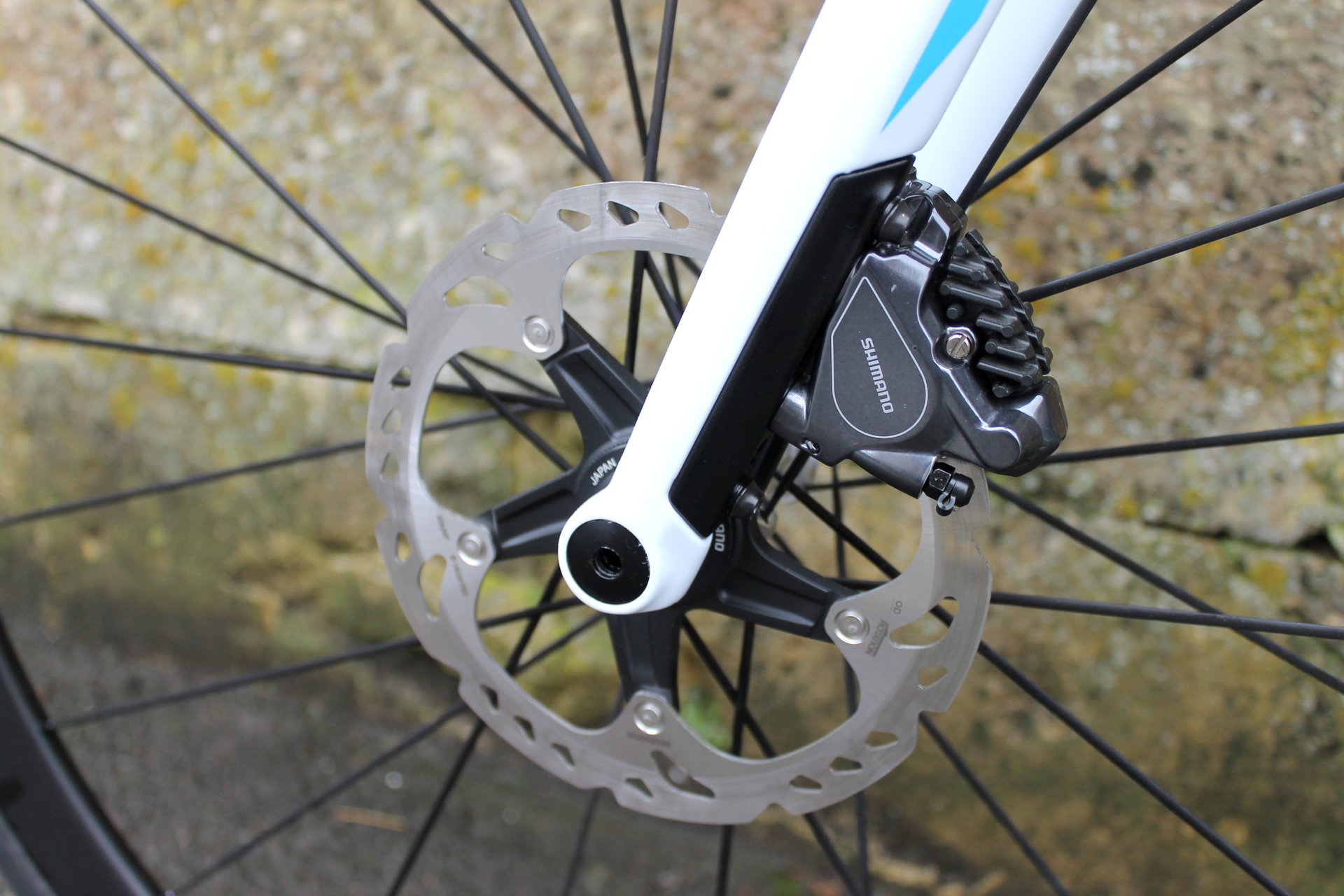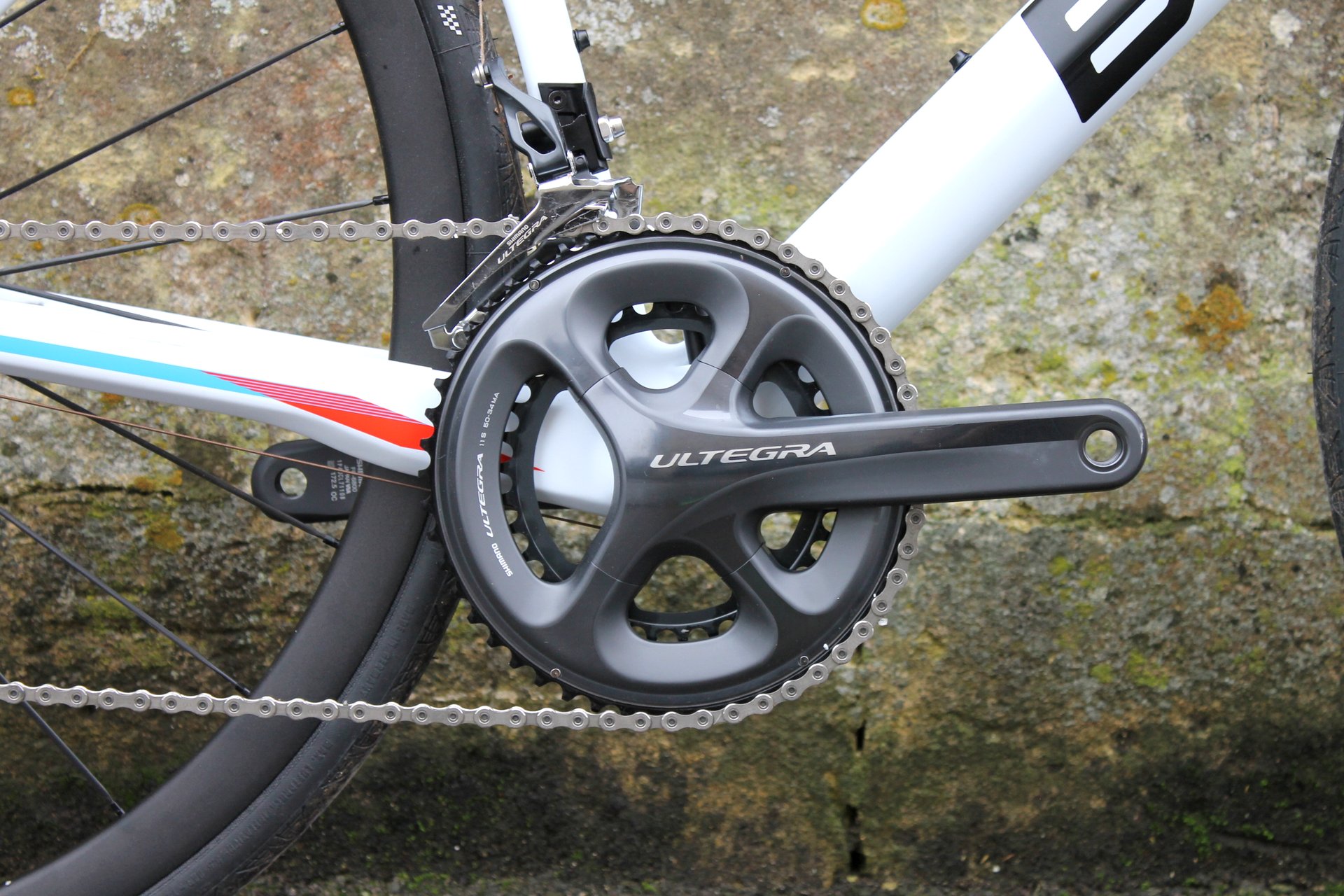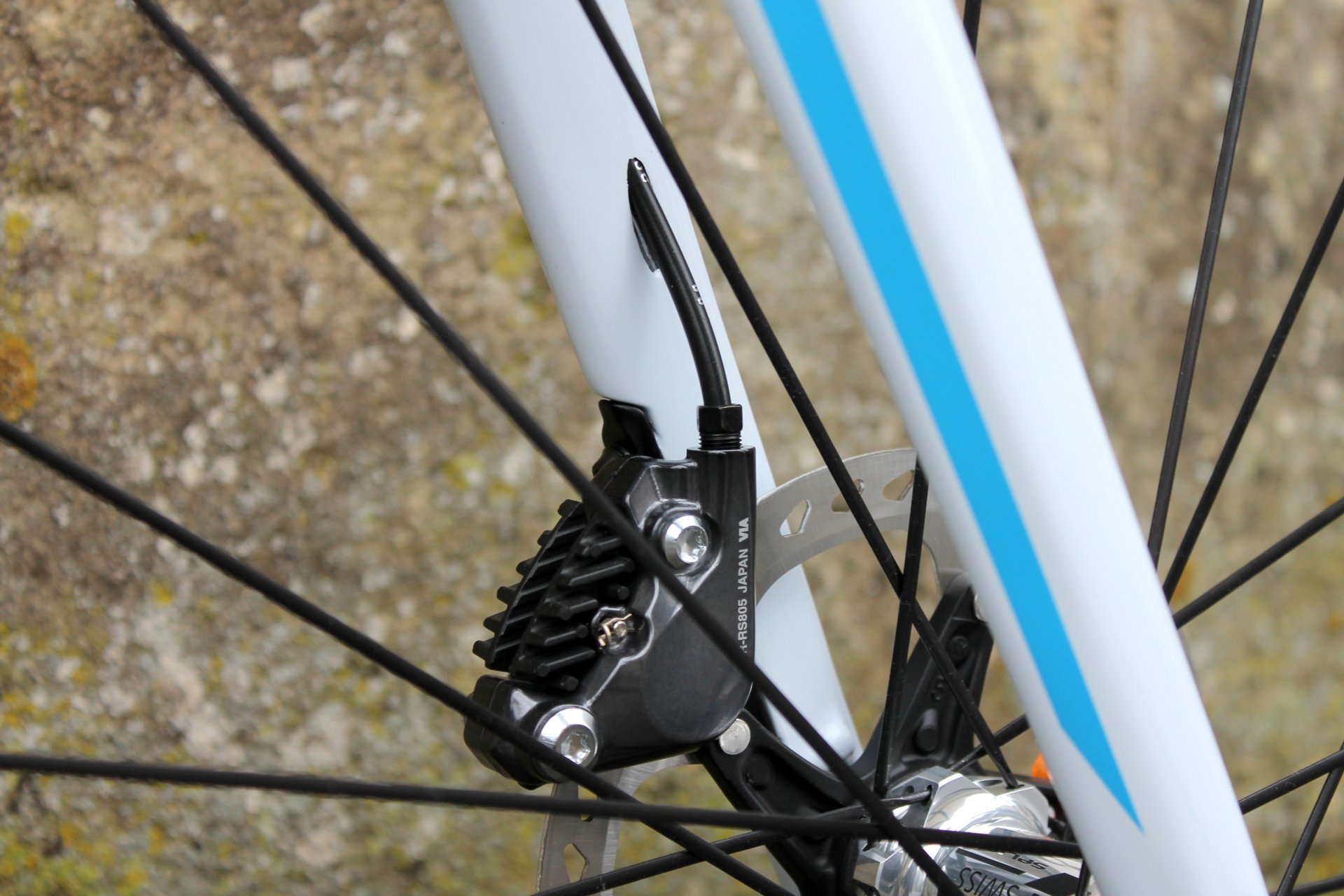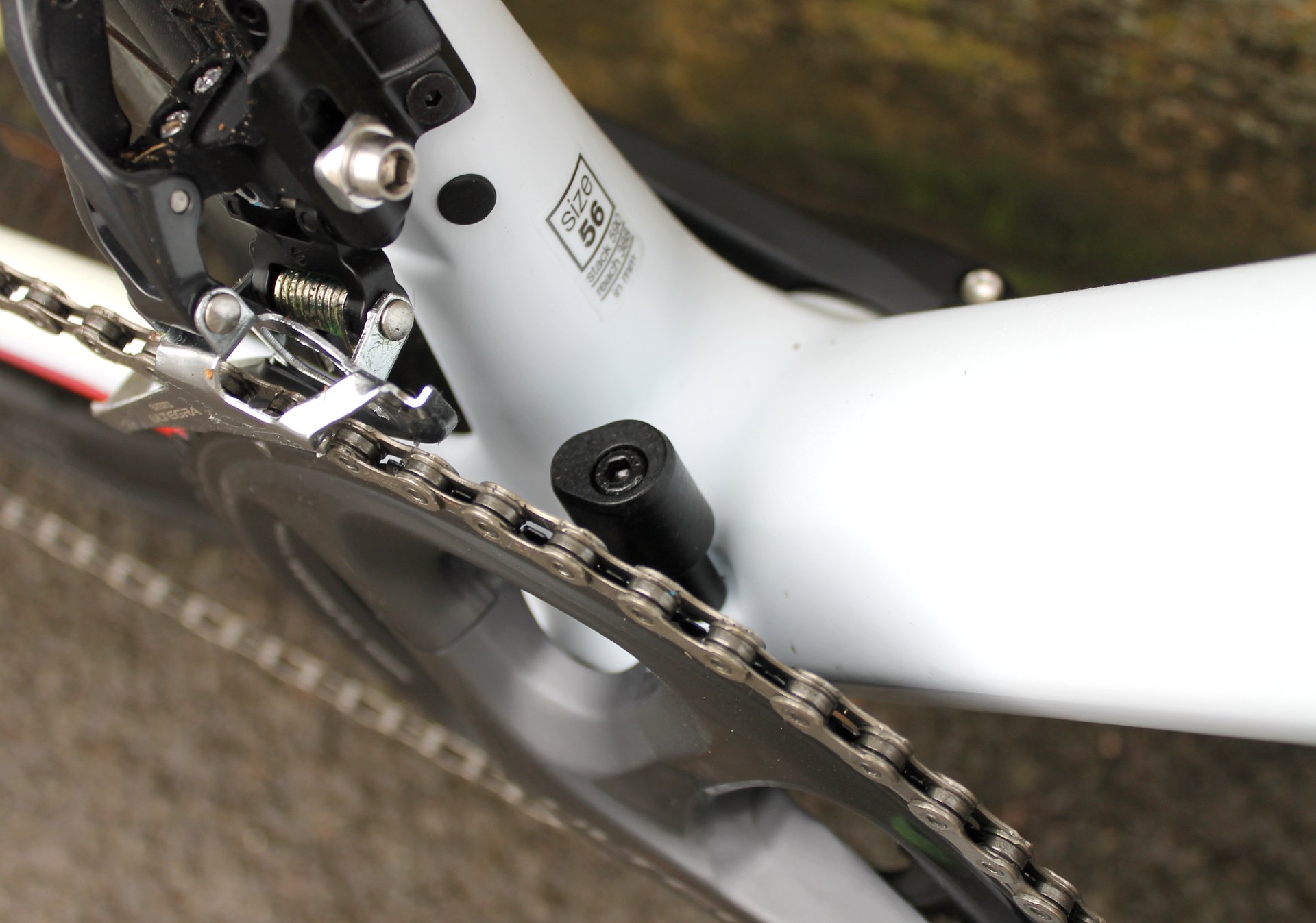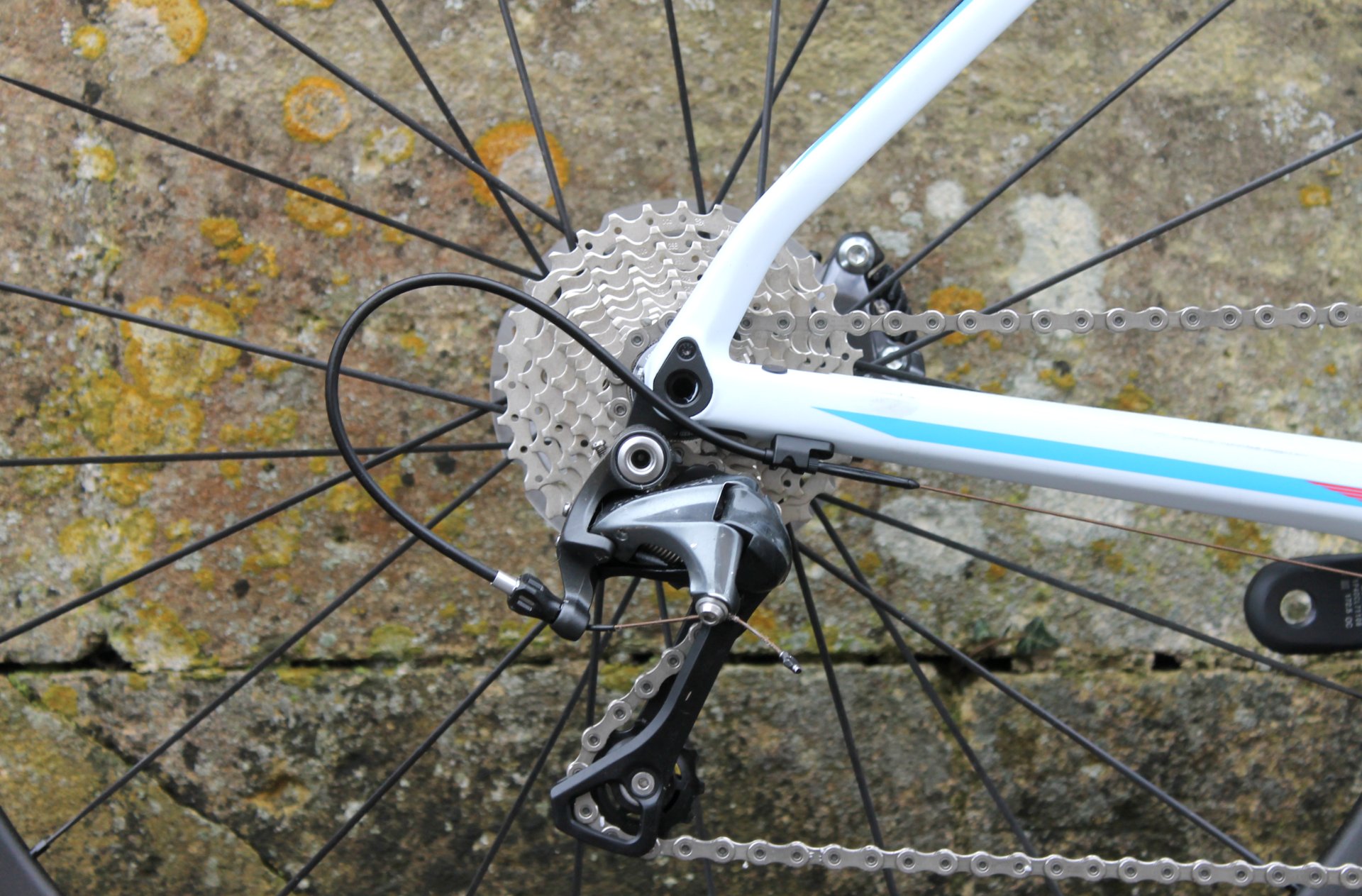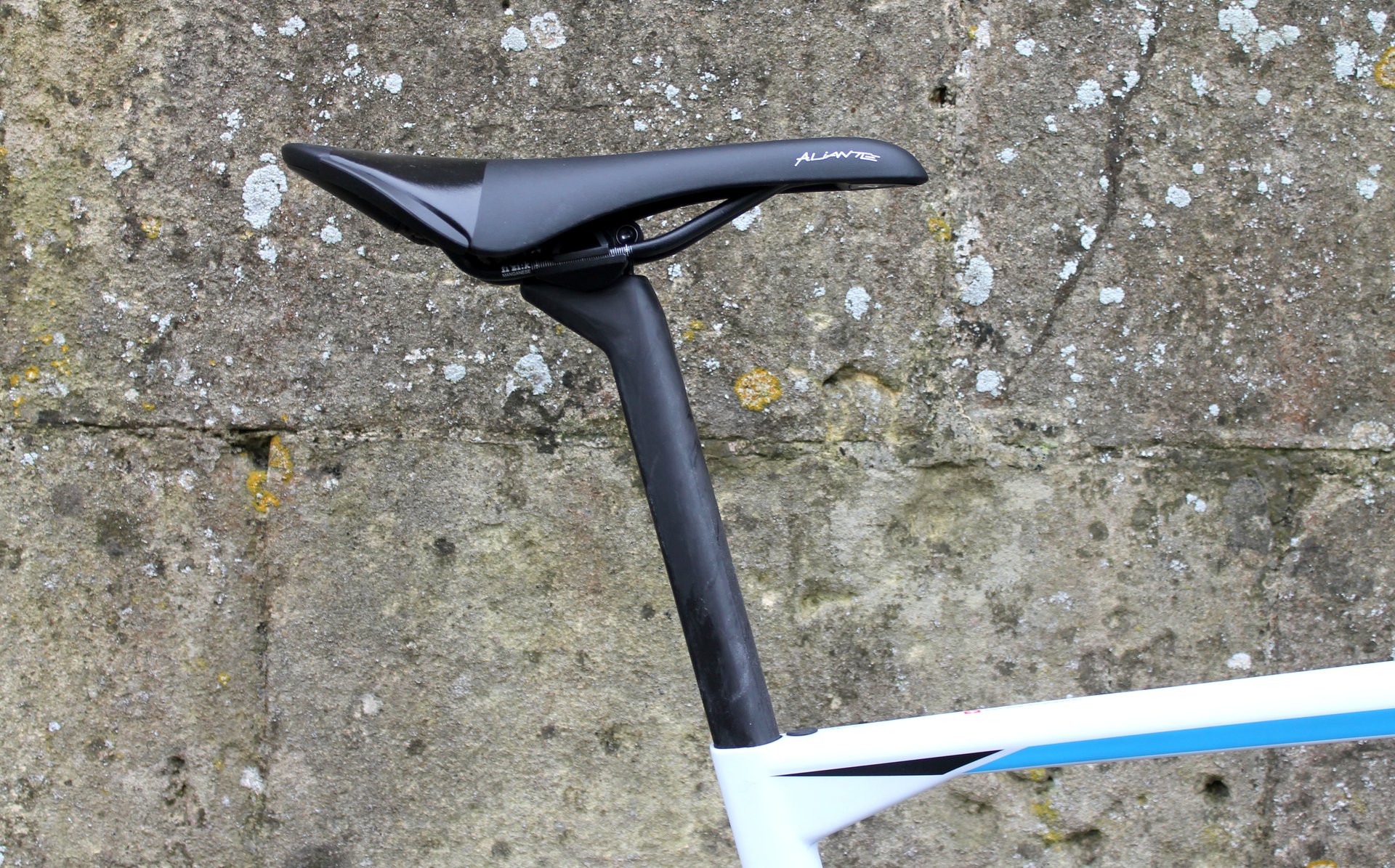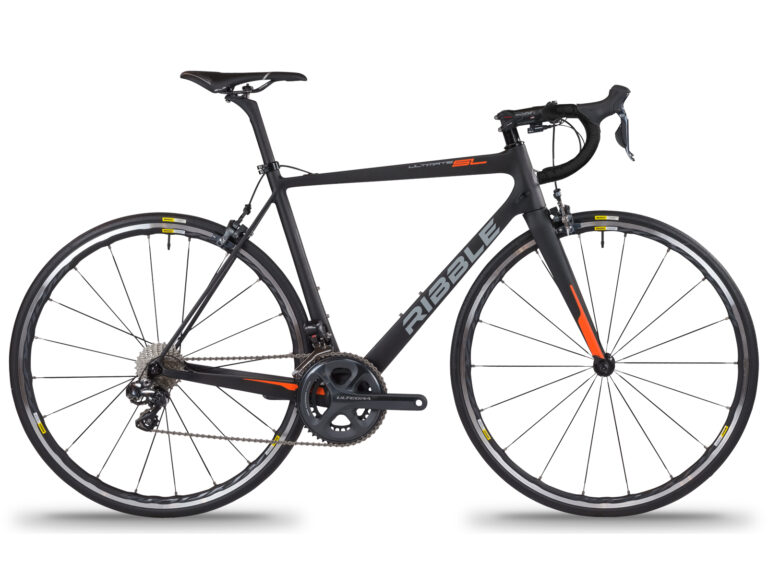The frame – a Re-Tuned Compliance Concept to re-tune your brain
At the heart of the Roadmachine 01 is a distinctive frame design that, despite it’s relatively endurance-bred geometry, screams of aggression, speed and even aerodynamic prowess. Built from BMC’s top-level TCC 01 carbon layup (TCC stands for ‘Tuned Compliance Concept’), the material is designed to deal with the cobbles of Paris-Roubaix, while still offering the responsiveness needed to excel on the roads between the pavé.
-
Specification
- Price: £4,099
- Weight: 8.21kg (56cm)
- Sizes: 47, 51, 54, 56, 58, 61cm
- Website: BMC
- UK distributor: Evans Cycles
Of course, you can’t actually see this beneath the paint, but what it means is the toptube, seatstays, seattube and forks are all designed to offer comfort, while the important bits for power transfer – namely the headtube area, chainstays and downtube – are oversized and stiffened.
One is designed to complement the other, resulting in a bike that can smooth less-than-perfect road surfaces without sacrificing raw speed. Throw in the capacity for at least 28c tyres, and you can gain even more comfort from the bike too.
The carbon layup is complemented by a distinctive rear triangle, with the seatstays narrowed and flattened, with the junction to the seattube made almost a third of the way down the frame – visibly lower than the vast majority of bikes. As a result, this ‘Angle Compliance Shaping’ allows the seatstays and tube to flex under duress, without loss in feel or responsiveness through the rear end.
Much the same applies with the fork, allowing enough flex but with extra beef integrated around the steerer tube and headtube areas to maintain stiffness. With the frontal area so important for aerodynamics, the tube shapes are clearly tapered, too.
With compliance taken care of, the bottom bracket area is substantial too, with the chainstay junction specifically flared to improve power transfer. Unlike most chainstays, which flare uniformly if they do, these are wider inboard, giving a more irregular quadrilateral cross-sectional shape, with the intended purpose to keep power transfer as efficient as possible- and as close as possible to the core of the bike.
